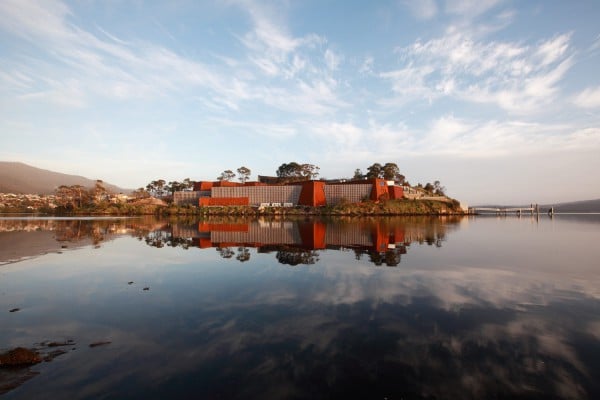Art & Exhibitions
Gambling Millionaire David Walsh’s Kooky Tasmania Museum MONA Clocks 1 Million Visitors
Hard to get to, yes, but apparently worth the trip.

Hard to get to, yes, but apparently worth the trip.

Sarah Cascone

The remote Australian island of Tasmania is experiencing new-found popularity thanks to Hobart’s Museum of Old and New Art (MONA), the brainchild of millionaire collector David Walsh.
Historically, the island was known for housing one of the British empire’s most forbidding jails. Now, thanks to the unexpected success of the museum, Tasmania, home to a mere 500,000 inhabitants, suddenly finds itself on Lonely Planet’s list of the world’s top ten must-see places. MONA has welcomed over a million people since opening its doors in 2011—and that’s without the Monaco casino, which Walsh would like to open there.
Walsh made his millions on the casino floor, operating the gambling syndicate Bank Roll. When he branched out into collecting art, his tastes were not exactly influenced by the art world establishment. Indeed, Walsh told the Monthly, MONA was conceived of as the “anti-museum,” with work “that pisses off the academics.”
Despite Walsh’s unconventional approach, a new story in the New York Times suggests that his “subversive adult Disneyland” has found its niche.
Instead of explanatory texts mounted on white walls, MONA has so-called O machines, portable audio-guide devices that sense where visitors are and deliver information about the art they are looking at. Among the 200 works on display from among Walsh’s 1,500-object collection is Wim Delvoye’s Cloaca Professional, a series of machines that faithfully reproduce the human digestive process and its end product.
Walsh also owns another poop-themed work Chris Ofili’s infamous The Holy Virgin Mary, which nearly shut down the Brooklyn Museum in 1999 for its use of elephant dung and nudity, although it is not currently on view, having recently appeared at the New Museum in New York. Other artists familiar to museum collections and exhibition rosters, such as Anselm Kiefer and James Turrell, are also included.
“The museum is born of risk, just like David’s early life of gambling,” Leigh Carmichael, the creative director of the institution’s winter festival, told the Times. “He stripped down the old museum of white spaces and interpretation and created immersive material so that you don’t feel guilty if you are not learning something.”
There’s plenty of offbeat art on the museum’s subterranean sandstone walls, but just getting to the museum is an experience in itself. From the port in Hobart, visitors travel along the Derwent River to the museum by catamarans, luxurious vehicles with three bars. Museum-goers can continue drinking inside at Void Bar.
MONA offers several membership levels, including a “Cemetery” tier which, according to the museum website, promises that “when you die, we have you cremated and put in a fancy jar in the museum.” The AU$75,000 ($57,000) package comes with all the usual perks (“parties, catalogues, annoying pamphlets, being sucked up to”) and the institution swears it isn’t a joke.
Museum facilities also include Walsh’s personal tennis court, located near the main entrance, and his vineyard and chicken coop. Maybe that casino would fit right in.